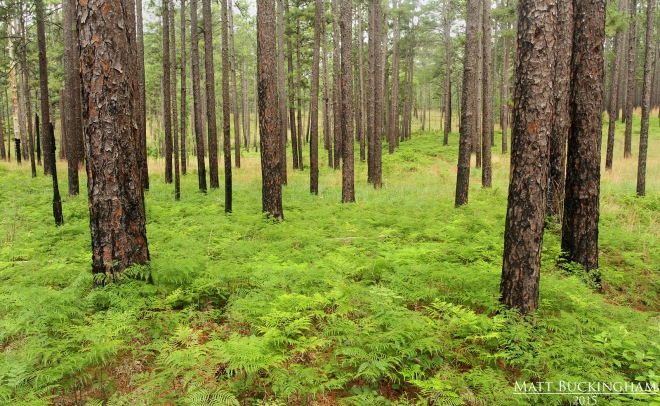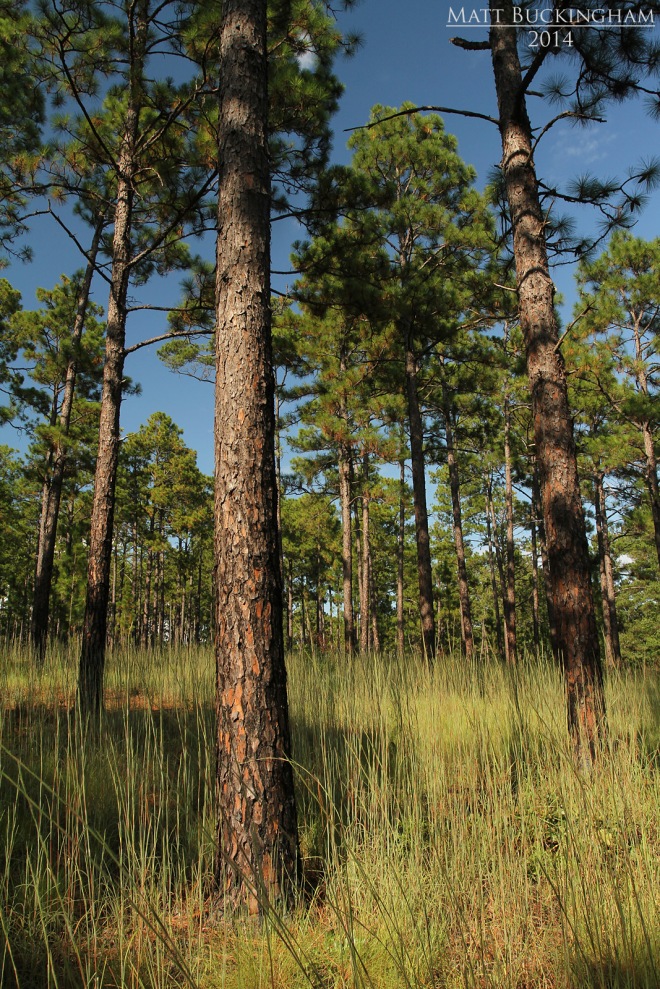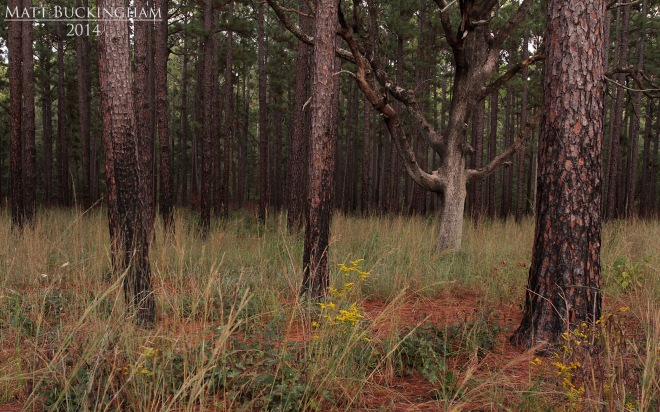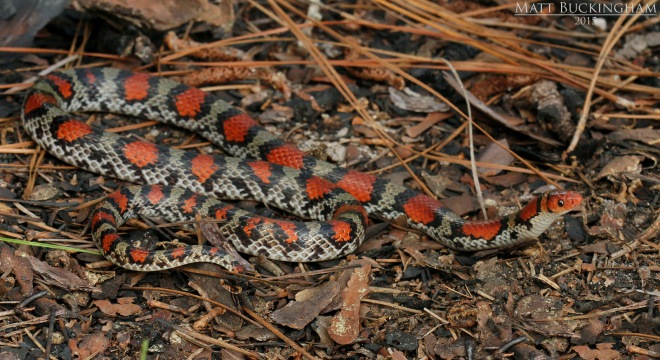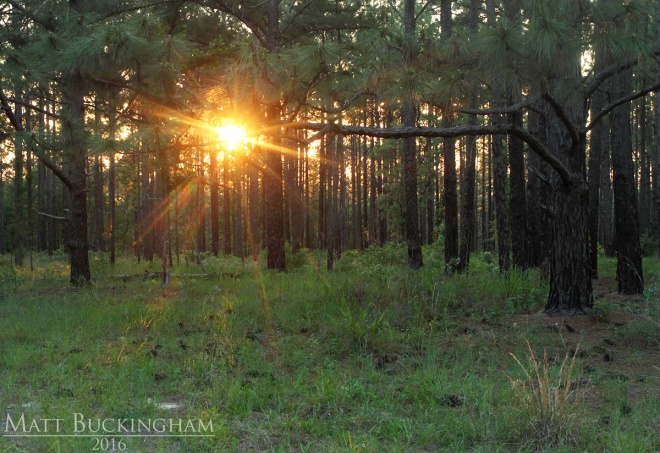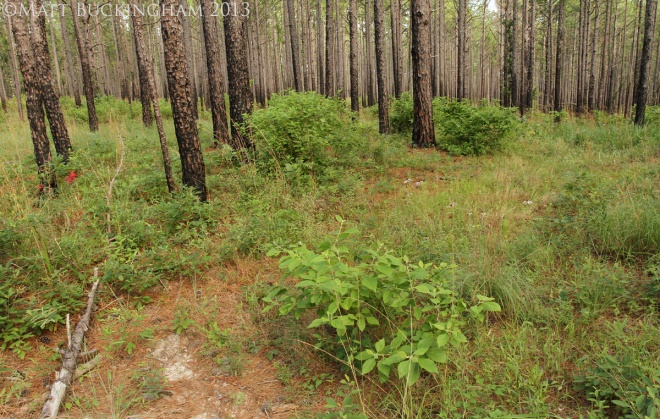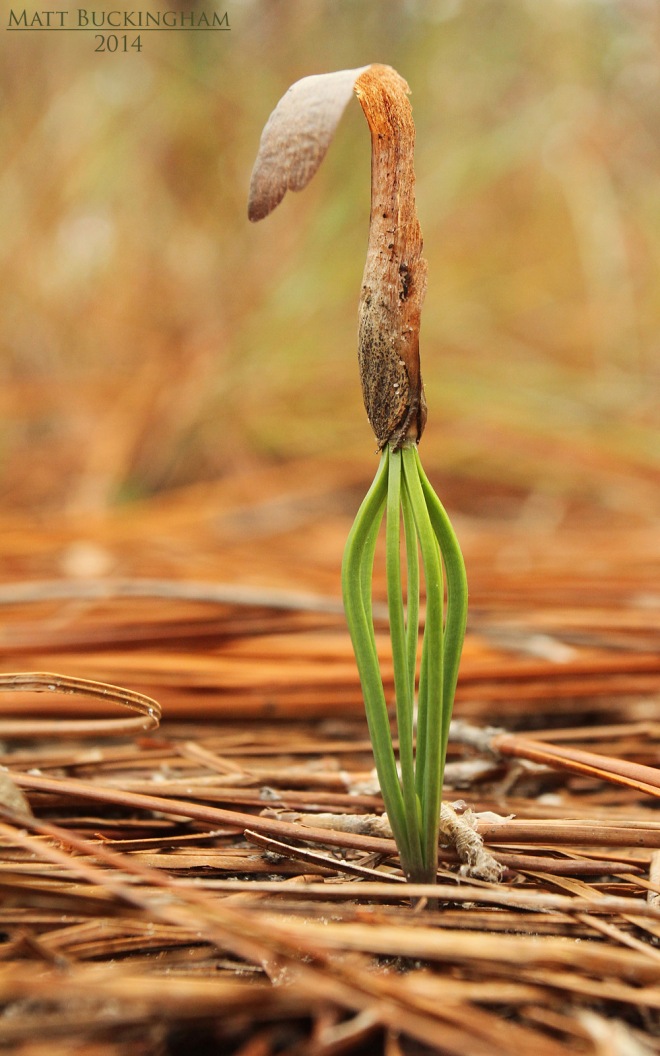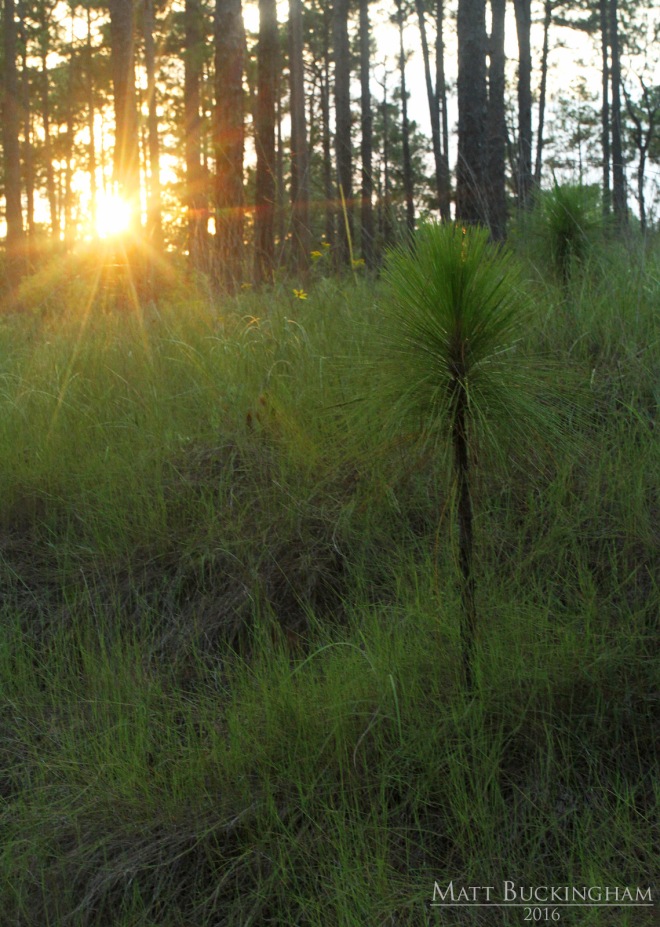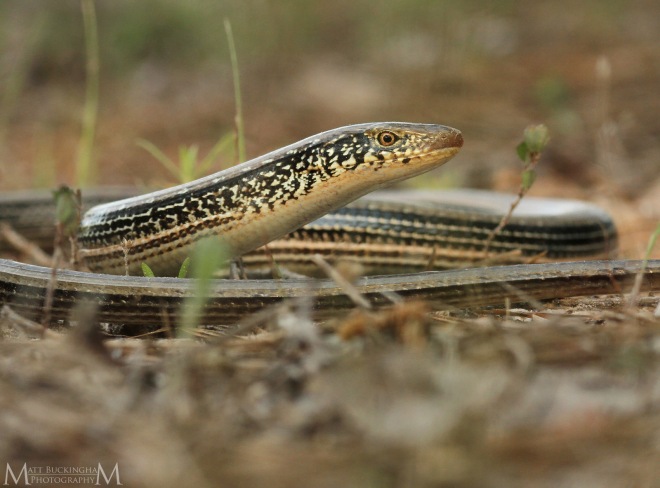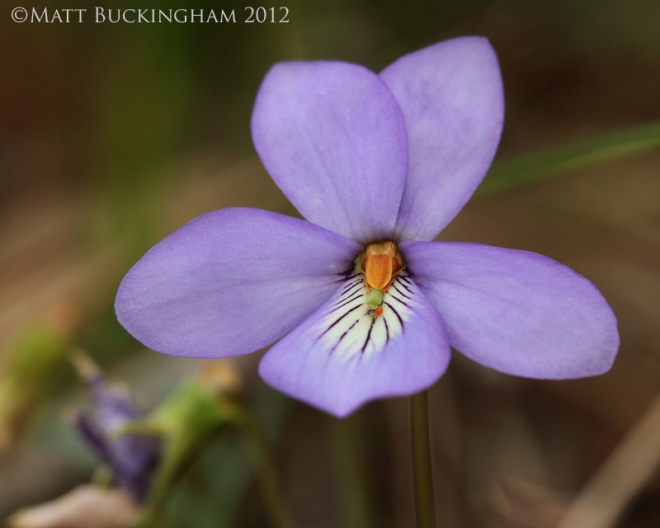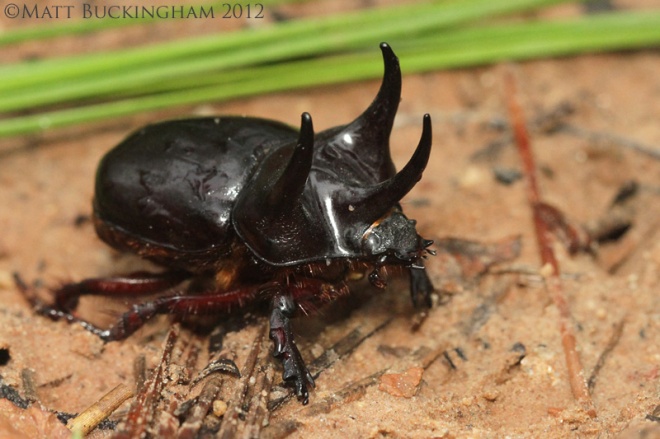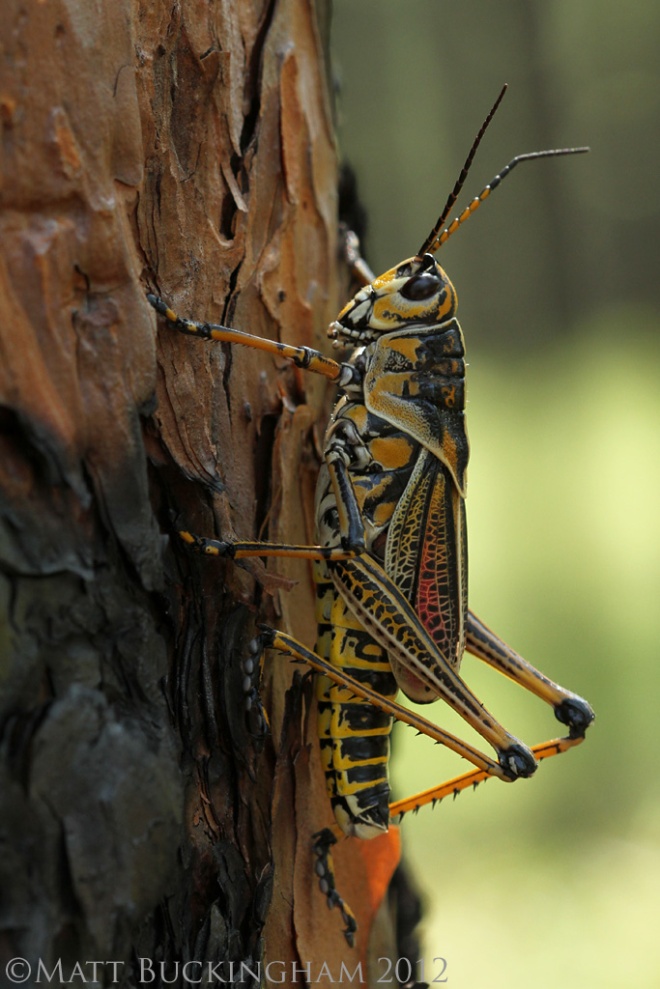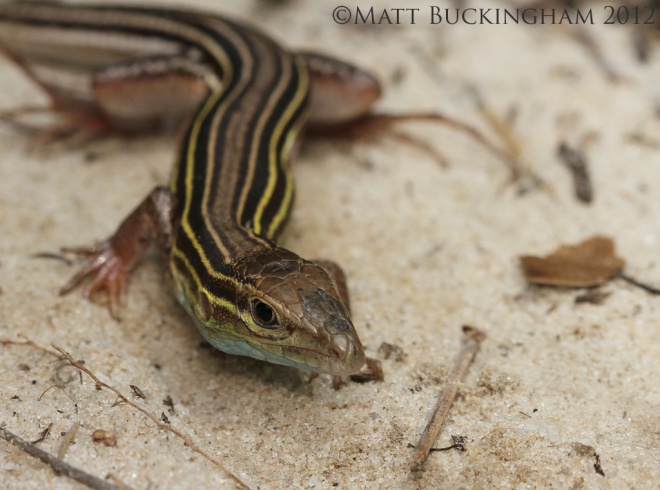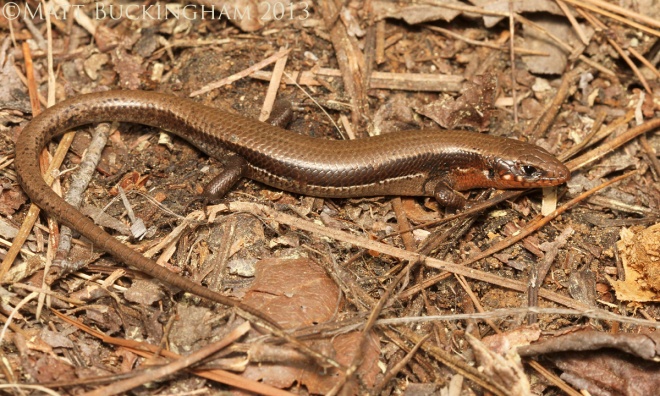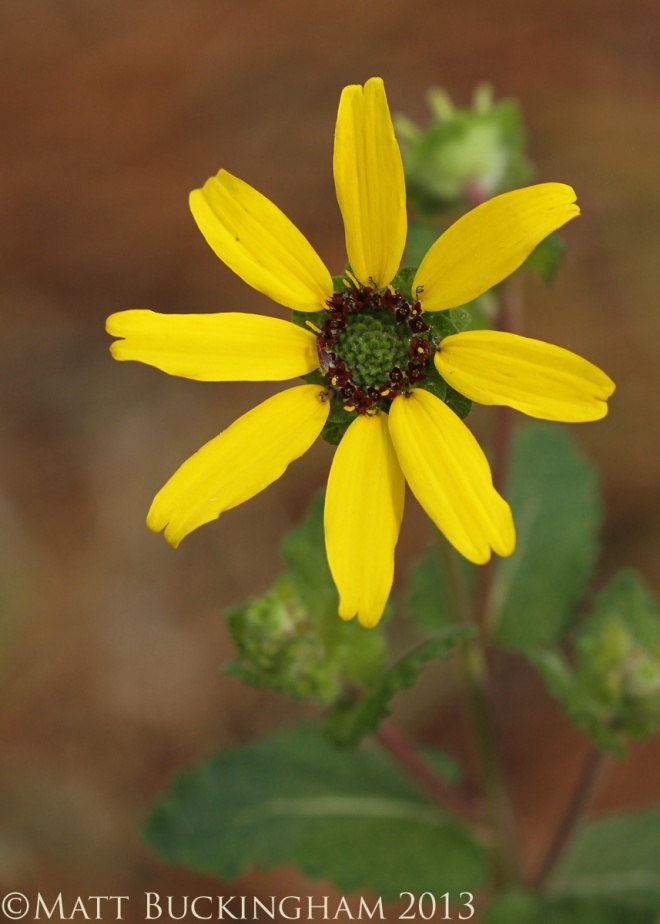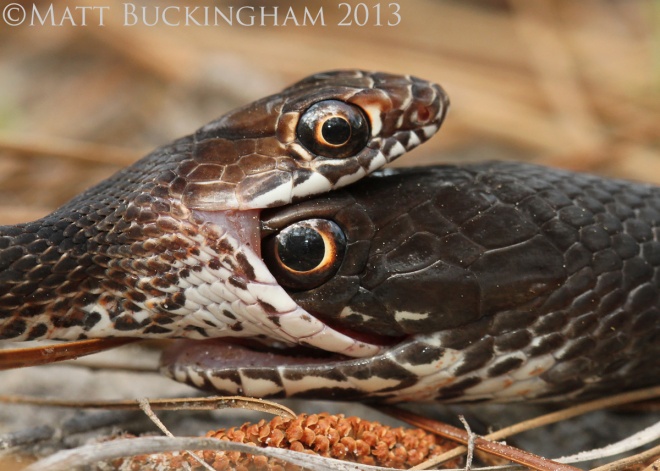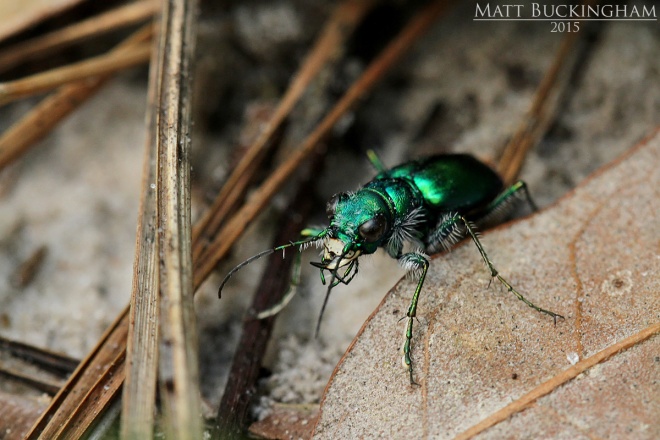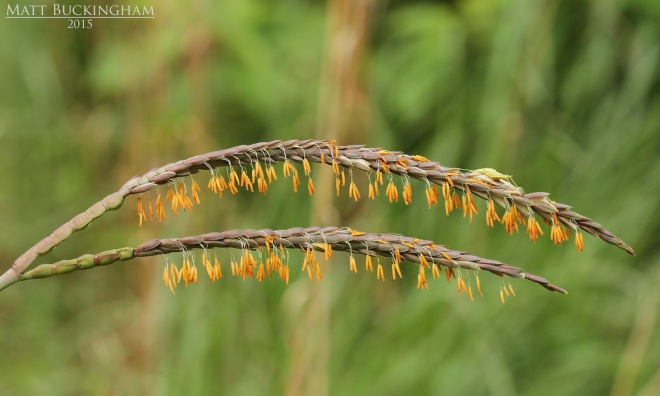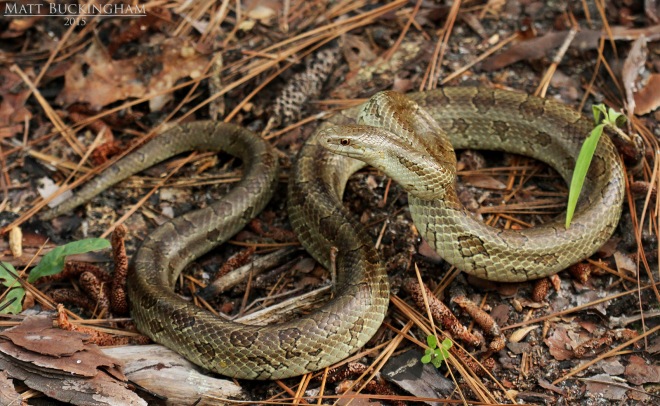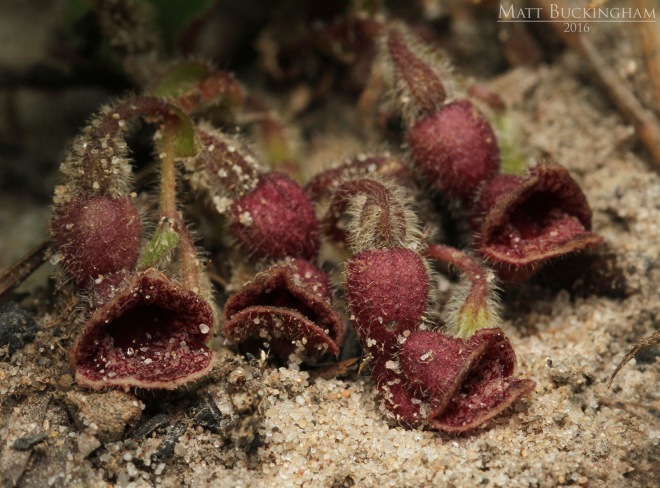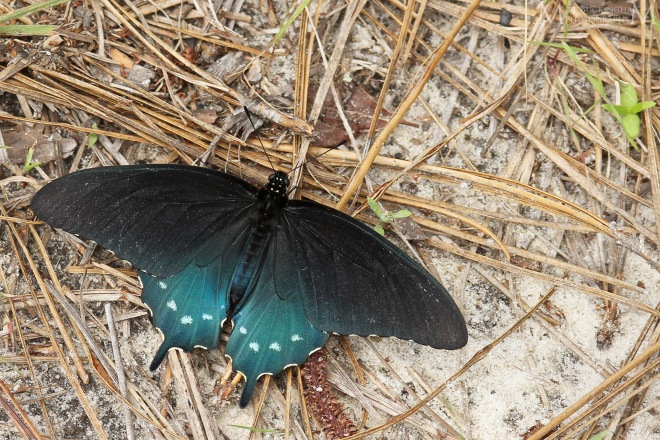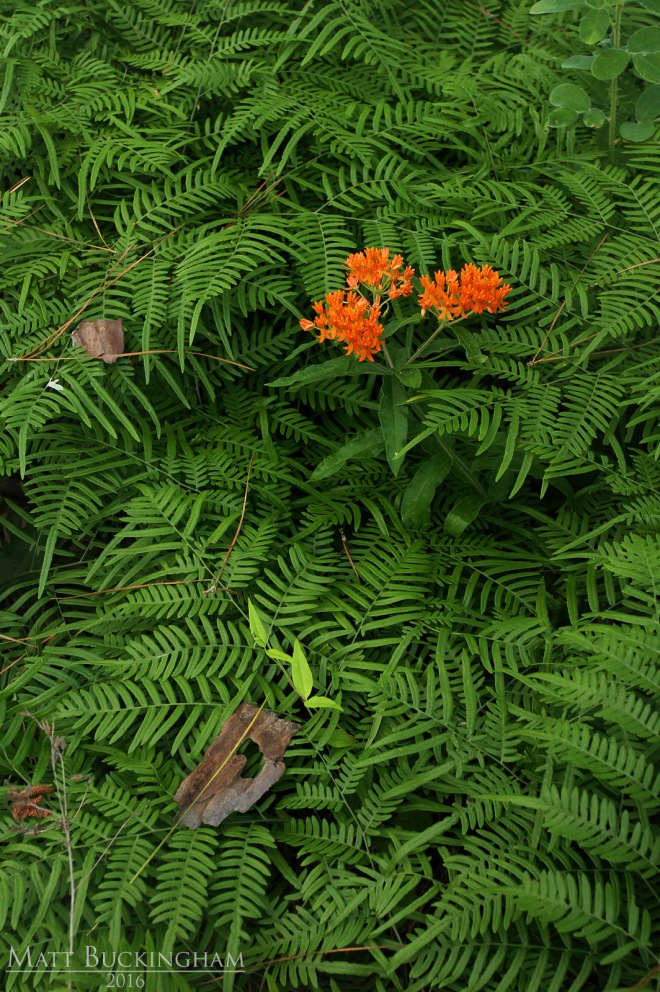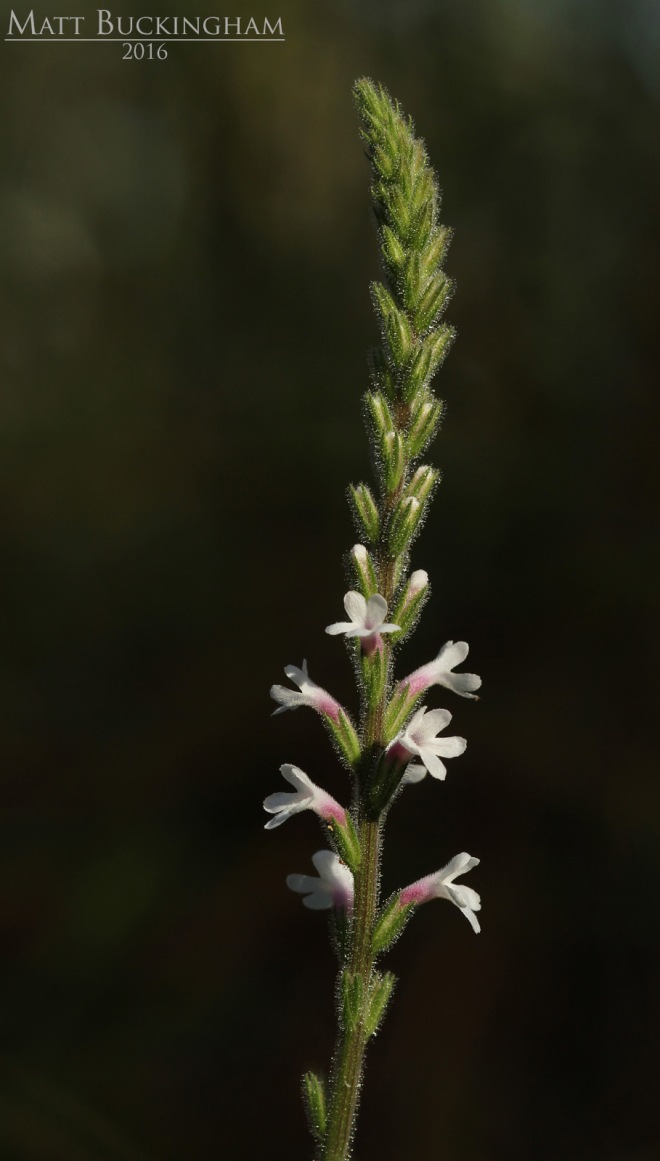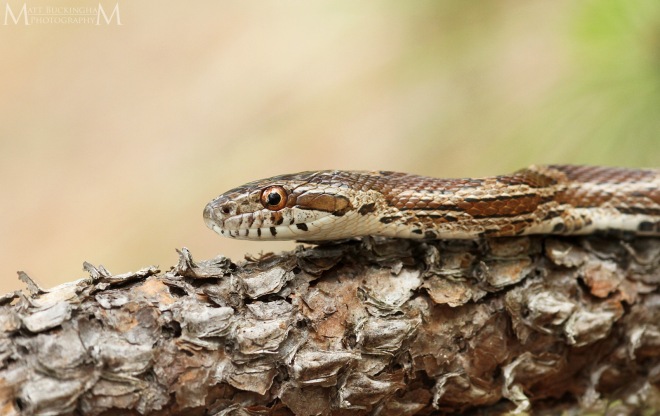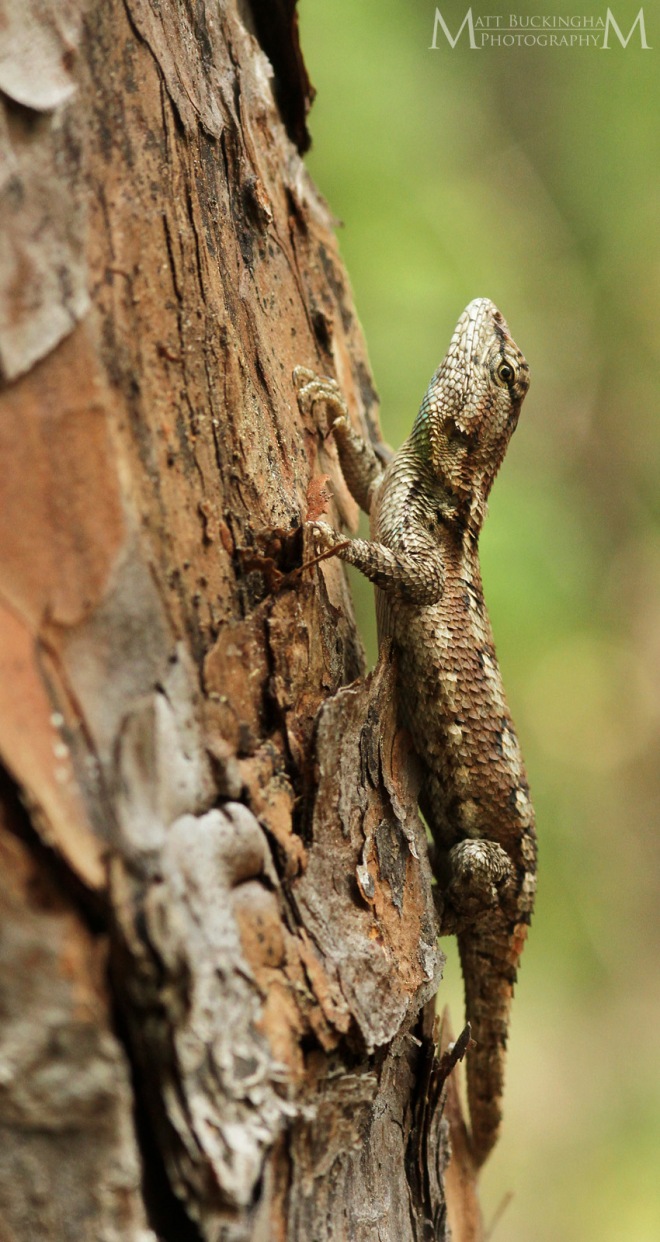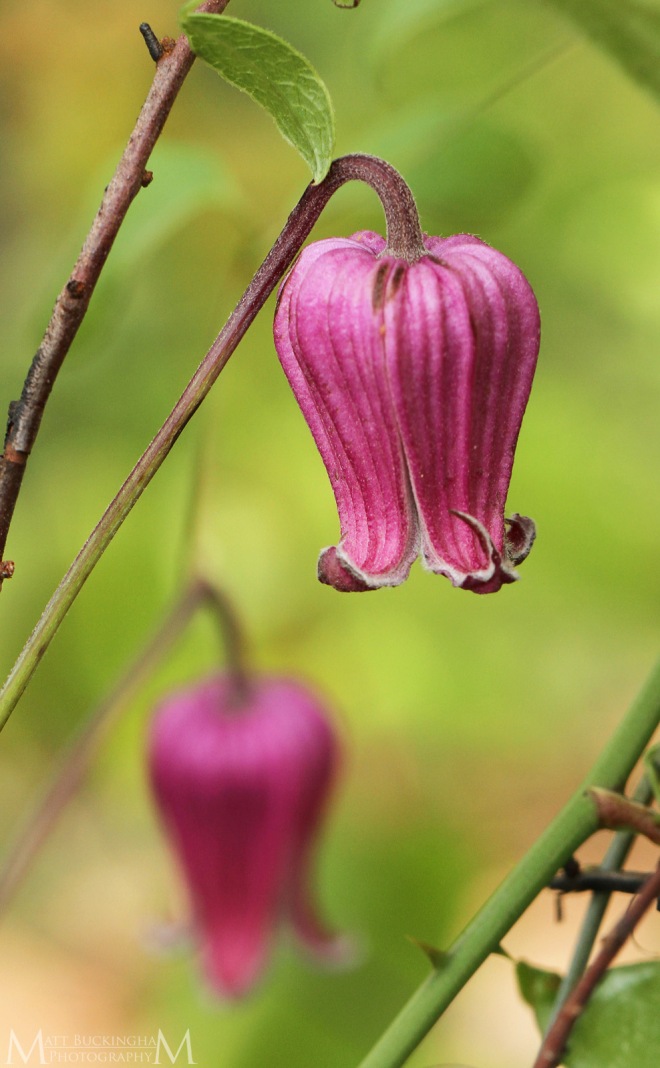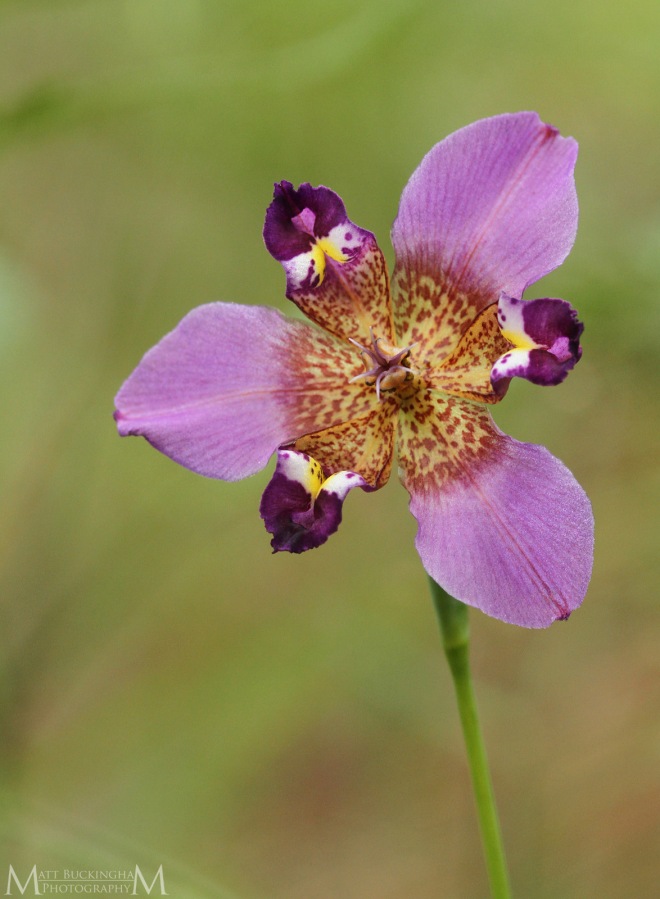
Sacred Datura
Between August 1 and September 30 I was able to cross 5 more species off my list, 3 of which came from another trip to the Davis Mountains:
Mountain Adder’s Mouth (Malaxis macrostachya)
Wood’s Jewel Scarab (Chrysina woodii)
Mountain Short-horned Lizard (Phrynosoma hernandesi)
Gulf Blazing Star (Liatris tenuis)
Barbed Rattlesnake Root (Prenanthes barbata)

Although we spent most of our time during our August trip to West Texas in the Davis Mountains, we camped the last night on the shore of Lake Balmorhea. I found the Sacred Datura (Datura wrightii) pictured above right at daybreak as I explored the area around our tent. The flowers of the Sacred Datura are primarily pollinated by large sphinx moths. As a result they open in the late evening and close in the early morning. Sacred Datura has a long history of significance for the people of the southwestern U.S. and Mexico. It is well known for its potentially lethal toxicity. However it has also been used extensively for medicinal purposes. The plant was also used by many native tribes in religious ceremonies, often to induce visions.due to its hallucinogenic properties. Unfortunately, the potency of its toxins resulted in the death of many of its users.
On the drive home we stopped at a few rock outcrops to help break up the drive and stretch our legs. It was at one of these outcrops that we spotted the Cory’s Dutchman Pipe (Aristolochia coryi). In the U.S., this bizarre plant can only be found in central and western Texas.

Cory’s Dutchman Pipe
Back in East Texas, my friend James Childress and I went looking for some late summer wildflowers. Two of my favorites are the Yellow Fringed Orchid (Platanthera ciliaris) and the Carolina Lily (Lilium michauxii). Both species are uncommon in East Texas. P. ciliaris occurs in herbaceous seeps, baygall margins, and occasionally wet ditches and prairie remnants. L. michauxii primarily occurs on the upper slopes of rich mesic ravines, often near the transition zone between slope and upland.

Yellow Fringed Orchid

Carolina Lily
While hunting for wildflowers James spotted a most interesting creature. The Giant Ichneumon (Megarhyssa macrurus) is a large parasitic wasp with extremely long ovipositors. They use these ovipositors to probe tunnels created by the larvae of horntail wasps. Horntails bore into the wood of dead and dying trees. The female ichneumon seeks out these larvae and with her ovipositor and lays her eggs on or in them. Her own larvae then parasitize the horntail larvae. The young ichmeumons will feed only on the horntails, killing them in the process. They will then pupate and emerge as adults from the tunnel that their host created for them.

Giant Ichneumon
In late August Hurricane Harvey passed through East Texas and dumped unprecedented amounts of rain on the region. Following the storm, James and I went looking for reptiles and amphibians, hoping that they would be active following the prolonged period of moisture.
We found a number of Southern Copperheads (Agkistrodon contortrix), the most attractive of which is pictured below.

Southern Copperhead
Among the amphibians observed was this enormous Gulf Coast Toad (Incilius nebulifer).

Gulf Coast Toad
The prolonged rainfall brought out scores of Hurter’s Spadefoots (Scaphiopus hurteri). These interesting frogs can be extremely abundant in certain areas, but require specific habitat conditions. These conditions typically consist of areas with deep, undisturbed sand where they can burrow and aestivate during the hottest and driest part of the summer. This species emerges only after heavy rains, where they may breed by the thousands in small ephemeral wetlands that may be little more than a puddle. The tadpole stage for these spadefoots is among the shortest of any frog, requiring as little as two weeks to go from an egg to a froglet capable of leaving the water. This short larval stage is an adaptation to allow them to breed in areas were the presence of water is a limiting factor, and allows them to breed in areas that other species are not capable of utilizing, effectively eliminating the competition.

Hurter’s Spadefoot
September is perhaps the best time to visit Catahoula Barrens. Wildflowers such as Texas Blazing Star (Liatris mucronata) and Nuttall’s Rayless Goldenrod (Bigelowia nuttallii) bloom in mass. Downy Lobelia (Lobelia puberula) is fairly common in wetter areas along the margins of the barrens.

Downy Lobelia
Small-flowered Fameflower (Phemeranthus parviflorus) occurs sporadically in Catahoula Barrens. The flowers of this interesting succulent open in late afternoon.

Small-flowered Fameflower
I leave you with this final shot of a Catahoula Barren. I captured this shot at dusk and tried to highlight the rich diversity of colors that can be found in these incredible landscapes.

Catahoula Barren

